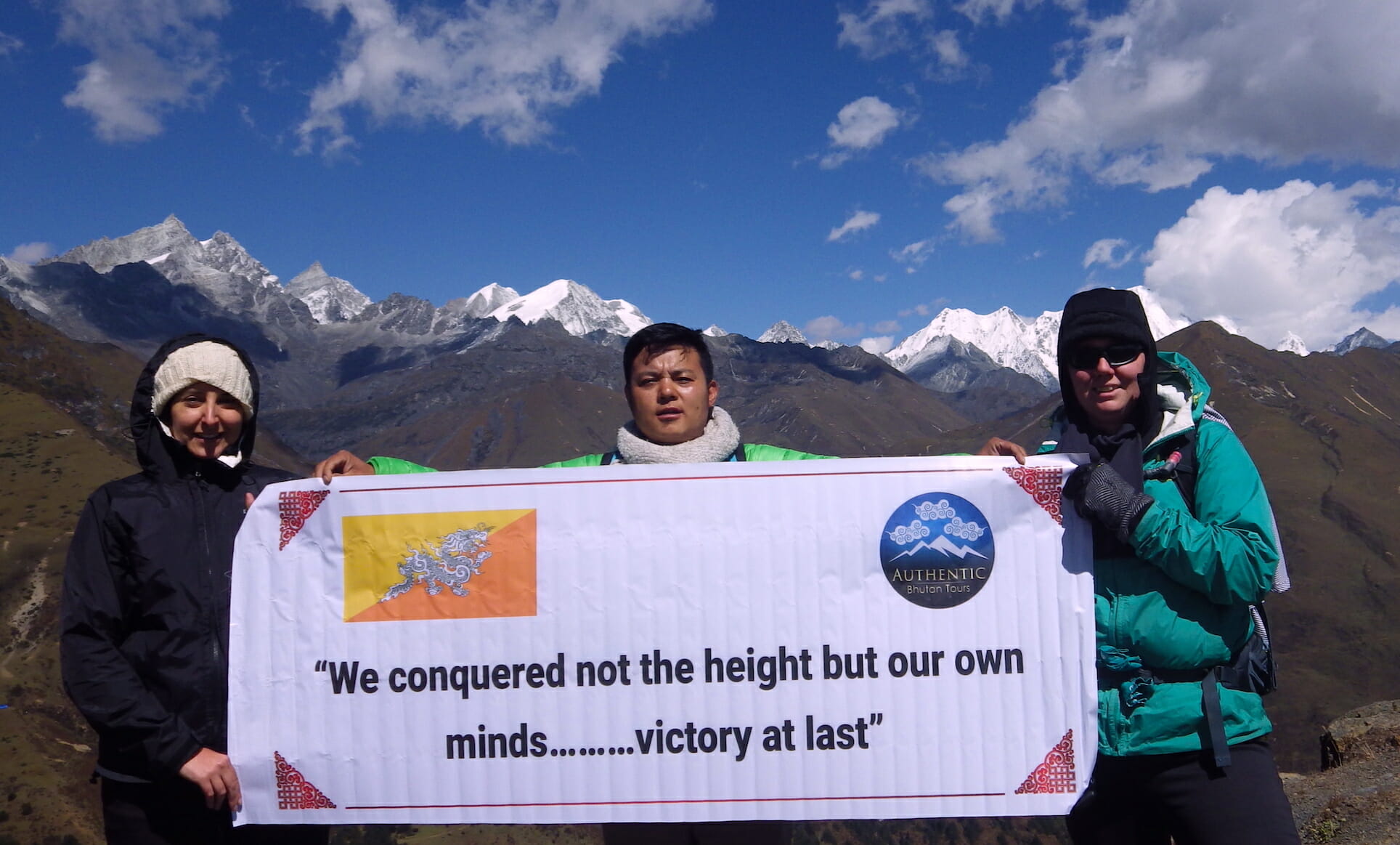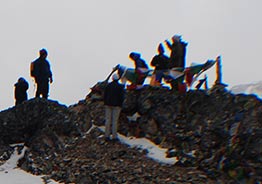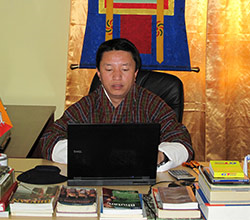The Laya Gasa Trek is considered one of the most scenic and challenging treks in Bhutan, offering amazing views of some of the most pristine and unspoiled landscapes in Bhutan. This fourteen-day trek is 217 km.
The Laya Gasa Trek is one of Bhutan’s most captivating and challenging trekking experiences, renowned for its stunning landscapes, rich cultural encounters, and unique journey through remote villages. Nestled within the heart of the Himalayas, this trek offers adventurers a chance to immerse themselves in the untouched beauty of Bhutan’s wilderness while connecting with the local communities that call these rugged terrains home.
The journey begins at Shana in Paro and takes you through gorgeous alpine meadows, high mountain passes, and dense sub-tropical jungles before terminating in Damji in Tashithang.
The first five days of this trek follow the same route as the Jomolhari Trek through Jigme Singye National Park and offer awe-inspiring views of Mt. Jomolhari, Jichu Drake, and Tsherimgang. On the sixth day, the path diverges and you will depart Lingshi for the campsite at Chebisa, a charming little village adorned with a beautiful waterfall of crystal clear water.
Along the trail, you’ll be able to spot indigenous animals such as blue sheep and Takins, the national animal of Bhutan. You’ll travel through remote mountain villages inhabited by Layaps (people of Laya), a distinct segment of the Bhutanese society with unique culture, traditions, and appearance. The trek also offers a day of relaxation at the famous Gasa hot springs that is sure to rejuvenate you.
This is one of the more difficult and challenging treks offered in Bhutan due to the high altitudes and steep ascents and descents along the path. The best seasons to complete this challenge are in April-June and Mid-September-Mid-November.
The Laya Gasa Trek is a captivating expedition that offers a perfect blend of natural beauty, cultural immersion, and adventure. It’s an opportunity to explore Bhutan’s remote corners, connect with its people, and forge unforgettable memories in a landscape that is as awe-inspiring as it is humbling.
Trekking provides the best opportunity to experience and explore the real heart of Bhutan.
Discover a unique insight into the rural culture of the Kingdom of Bhutan.
Close contact with the people living in the remote areas of Bhutan.
Explore and appreciate the pristine environment of Bhutan.
Enjoy with the wilderness experiences in Bhutan.
Explore the adventure tours of Bhutan.
Enjoy with majestic views of the country’s virgin landscapes and unclimbed mountains.
Explore the routes taken by our ancestral.
Trekking through the beautiful lakes of Bhutan.
Day 01. Arrive to Paro International Airport
The flight into Paro on our national carrier, Druk Air, is a befitting introduction to the spectacular beauty of our country.
In clear weather, magnificent views of the world’s highest peaks like Gangkar Puensum, give way to the lush green Paro valley as you land. Your Bhutanese escort from Authentic Bhutan Tours- Your Trip Organizer in Bhutan! will warmly welcome & greet you on arrival, and then drive you to the Paro Rimpung Dzong, the center of civil and religious authority in this region. Lunch will be served at Paro Restaurant.
After lunch we will visit to Paro National Museum, it holds fascinating collections of art, relics, religious Thangka paintings and Bhutan’s exquisite postage stamps. Evening stroll around Paro town. Welcome dinner and over night stay at Paro hotel. Mandala Resort or similar standard.
Meal Plan: Welcome Dinner Accommodation: Hotel
Day 02. Sharna Zampa – Thangthangkha (Trek Starts)
At around 630am to 7am, we will start our journey to Sharna Zampa, where our trekking staff will be waiting for us. At Gunitsawa Army post, our Army permit will be checked and endorsed. We will have breakfast and Sharna Zampa, where our trekking cook will prepare for us. After breakfast, we will start our trek. Today’s trek will be a long day trek with lots of small ups and downs. After going uphill through the river valley the valley finally narrows gradually to a mere path, which descends to a meadow where a camp will be set up. From here, if weather permits, we will have the first great view of Mt. Jomolhari.
Accommodation: Camping Altitude: 3610m. Distance: 22km. Ascent: 770m. Descent: 10m. Time: 7-8hrs.
Day 03. Thangthangkha – Jangothang
Today’s trek continues up the Paro Chhu which widens into patches of alpine meadow and scanty growths of forest. We will cross an army checkpoint along the way and enjoy a spectacular view of high mountain ridges and snow-capped peaks. In this area yaks and their herder’s homes become a regular feature of the landscape. Passing the villages Soe, Takethang and Dangochang is another asset on this day. After reaching Jangothang, one of the most beautiful campsites of the Himalayas, we will have a spectacular view of Mount Jomolhari.
Accommodation: Camping Altitude: 4080m. Distance: 19km. Ascent: 480m. Descent: – Time: 5-6 hrs.
Day 04. Jangothang Halt
Today will have a rest day and it provides plenty of possibilities for day hikes with great views of lakes and snow capped mountains such as Jomolhari and Jichu Drake. There are good chances to spot some blue sheep on the upper slopes of the valley. Jangothang is a perfect environment for your acclimatization. We will trek up to Tshophu Lake.
Day 05: Jangothang – Lingshi
A good day’s walk today with great views of the Jhomolhari, Jichu Drake and the Tserim Gang. We have to cross the Nyelela pass (4,700-m). We pass by the picturesque of Lingshi village and our first views of the truly mystical Lingshi Dzong atop a high hill. Overnight camp at Lingshi
Accommodation: Camping Camp Site: Lingshi Altitude: 4150m Distance: 19 km Ascent: – Descent: – Time: 6 – 7 hours.
Day 06. Lingshi – Chibesa
Today is the shortest walking day, and we can really take it easy. Shortly after starting we will reach a chorten below Lingshi Dzong. Here, we have the choice of staying on the main trail or taking a detour up to the Lingshi Dzong (4,220m), which sits right atop a high ridge. This Dzong is under reconstruction from a 2011 earthquake, which damaged its central building. In addition to a very special atmosphere of mystic tranquility, Lingshi Dzong provides a great view over the valley.
After Lingshi Dzong, we will be passing the villages of Lingshi and Goyul. In Goyul, the stone houses are clustered together to form a small compact village that is unusual in Bhutan where settlements are usually scattered. On reaching the campsite at Chebisa, we will have plenty of time to visit the village houses if you feel up to it. There is also a beautiful waterfall located behind the village that is worth visiting.
Accommodation: Camping Altitude: 3880m. Distance: 10km. Ascent: 280m. Descent: 410m. Time: 5-6 hours.
Day 07. Chebisa – Shomuthang
The morning starts with a long ascent behind Chebisa Village (2-3 hours) through a wide pastureland towards Gobu La (pass). On the way, we will see a few people herding yaks. There is also a great chance to spot large herds of blue sheep above the trail. After crossing Gobu La (4,410m), we descend into the valley, then climb again a little bit, before descending again to Shakshepasa (3,980), a large U-shaped valley. Climbing from here we will finally reach the campsite at Shomuthang, above a river, which is a tributary of the Nochu river
Accommodation: Camping Altitude: 4220m. Distance: 17 km. Ascent: 890m. Descent: 540m. Time: 6-7hrs.
Day 08. Shomuthang – Robluthang
Today’s trek will begin by climbing up the valley to view Kang Bum (6,526 m) and some edelweiss. After two hours of climbing we will reach Jhari La (4,750m), from where we catch the first glimpse of Sinche La, the pass we will have to cross the day after. The big snow peak in the north is Gangchhenta 6,840 m, better known as the Great Tiger Mountain. If weather is clear, Tserim Kang and the top of Jomolhari will be visible. The camp by the river is called Tsheri Jathang located in a beautiful wide and remote valley. Herds of takin, the Bhutanese National Animal, migrate to this valley in summer and remain for about four months. The valley has been declared as Takin sanctuary. Climb up a little bit and we will reach the campsite at Robluthang in a rocky meadow.
Accommodation: Camping Camp Site: Robluthang Altitude: 4160m. Distance: 18 km. Ascent: 700m. Descent: 760m. Time: 6-7hrs.
Day 09. Robluthang – Limithang
The trek starts out with an initial 40-60mins ascent before gradually raising for another 1.5 hours through a boulder field. It is then a 1hour steep ascent before reaching Sinche La (5,005m) – the final and highest pass on the trek if we don’t intend to continue the Snowman trek from Laya onwards.
As we descend the far side of the pass, we will see an impressive terminal moraine and a glacial lake at the foot of the valley. We can see classic examples of lateral moraines where the glacier has pushed rocks up both sides of the valley. Below the moraine, we will cross the Kango Chhu and soon reach the Limithang campsite. The peak of Gangchhenta towers over the campsite even though it’s quite a distance away
Accommodation: Camping Camp Site: Limithang Altitude: 4140m. Distance: 19km. Ascent: 850m. Descent: 870m. Time: 6-7hrs.
Day 10. Limithang – Laya
Today, we will walk downhill all the way along a narrow, winding river valley. After a long time, the trail takes us through densely forested region. The trail leads to the west side of Laya village. From the west of the village we will have spectacular views of Mt. Gangchhenta and catch Mt. Masagang. In the village center is a community school and a basic health unit with a telephone connection. The campsite is located below the school.
Accommodation: Camping Camp Site: Laya village Altitude: 3840m. Distance: 10 km. Ascent: 60m. Descent: 340m. Time: 4-5hrs.
Day 11. Laya – Koina
The trail winds up and down along the river valley of Mo Chhu avoiding natural obstacles and affording breath-taking views of the raging river, feeder streams and waterfalls. Lots of ups and downs will lead us to Kohi Lapcha at 3300 m. The trek then drops down to the large stream of Koina Chhu, where we will find the campsite of Koina.
Accommodation: Camping Camp Site: Koina. Altitude: 3050m. Distance: 19 km. Ascent: 260m. Descent: 1070m. Time: 6-7hrs.
Day 12. Koina – Gasa
Today we will have the last major climb of the Laya Gasa Trek. We will cross Bari La (3,740m), after which the trail descends all the way until we reach to Gasa village (2,770m). We will descend for another hour to the Gasa Tsachu (hot springs) and relax in the rejuvenating mineral waters. The Gasa Tsachu is one of the most popular hot springs in Bhutan. Our car and driver will be meeting tonight.
Accommodation: Camping Altitude: 2240m. Distance: 14km. Ascent: 740m. Descent: 1500m. Time: 6-7hrs.
Day 13. Gasa – Punakha.
Today in the morning also, we will relax in Gasa Hot Spring. After our breakfast, we will bid farewell to our trekking staff and horsemen. Then we drive to Punakha. On reaching Punakha, we will visit Punakha Dzong, the most beautiful Dzong in Bhutan. Lunch will be served at Punakha and then we will visit to Chhimi Lhakhang, the temple of feritility. Evening at leisure. Dinner and over night stay at hotel Punakha or Wangdi. Hotel Pema Karpo or similar standard.
Day 13. Gasa – Punakha.
Today in the morning also, we will relax in Gasa Hot Spring. After our breakfast, we will bid farewell to our trekking staff and horsemen. Then we drive to Punakha. On reaching Punakha, we will visit Punakha Dzong, the most beautiful Dzong in Bhutan. Lunch will be served at Punakha and then we will visit to Chhimi Lhakhang, the temple of feritility. Evening at leisure. Dinner and over night stay at hotel Punakha or Wangdi. Hotel Pema Karpo or similar standard.
Day 15. Thimphu – Paro
Today we will drive to Paro and hike to Paro Taktshang Monastery, the most famous and sacred monastery in Bhutan. Taktshang means “Tiger’s Nest” named after Guru Rinpoche who reportedly flew to this site riding on the back of a flying tigress in the 8th century. We have to walk about 2hours and 30minutes up-steep from the road end. The trail climbs through beautiful pine forest, many of the trees festooned with Spanish moss, and an occasional grove of fluttering prayer flags.
Lunch will be served at Taktshang cafeteria. While coming back, visit Kyichu Lhakhang, it is one of the two most sacred and the oldest temples in Bhutan, built in 7th century by Tibetan king Songtsen Gampo (the 33rd Tibetan king, who is also the manifestation of Avalokiteshvara, commonly known to Bhutanese as Chenrize).
Evening at leisure, dinner and overnight stay at Paro Hotel. Olathang Hotel or similar standard.
Day 16. Paro – Paro International Airport (Departure)
After our breakfast, we will drive to Paro International Airport for your onward flight. Our guide and driver will bid you farewell here at the airport. We wish you a very safe and pleasant flight for your onward destinations.
Start planning your tailor-made Dream Holiday to Bhutan – The Land of happiness!
In order to experience the best and rewarding fulfillment clients must plan in advance the different logistics that you have in your minds before actually venturing into the world of trips. You might have wishes and hopes for which you need to plan.
The following information will help you to plan your dream trip to Bhutan.
1. When and how to visit Bhutan?
Choose your traveling date like Arrival/Departure date. You also need to choose entry/depart Bhutan via AIR or LAND.
By Air: Druk Air, the national carriers is the only service operator in the kingdom and operates several flights per week from Bangkok (Thailand), Delhi & Kolkata (India) and Kathmandu (Nepal) to Paro (Bhutan). The Paro International Airport is located about an hour and a half drive from Thimphu, the capital city of Bhutan.
Paro airport is daylight restricted, and the flights are totally dependent on the weather. As a result, sometimes flights are delayed. It is therefore a good idea to keep at least 24 hours of transit time for connecting flights out of Paro. You might also want to consider traveling on a non-restricted ticket so that if you miss a connecting flight, you can be rerouted or seated on the first available carrier.
Sometimes flights into Paro are disrupted because of unfavorable weather conditions. If this occurs, the flight will stop for the night at the transit airport. To be prepared, you may want to carry your essential personal items in your carry-on luggage.
By Land: Phuentsholing, a Bhutanese town in the southwest has road access to India. It is located about 170 km from the Indian domestic airport at Bagdogra, West Bengal. Phuentsholing is about 172 km from Thimphu the capital city of Bhutan and is about 6hours drive distance. And S/
2. What are your itineraries?
All the tours can be customized and extended as per our valued client’s requirements. There are sample itineraries for your kind reference and it will give you some general idea of the likely trip scheduled.
Complete the tour request form and submit it to us. Send us correct name list. We will send you the flight reservation status via email.
After confirming your reservation, we need the scanned copy of member’s passport.
Please remit us full payments and send us the copy of remittance paper via email. Visa will not be accepted without full payment.
We will send you the flight ticket copy and Visa Clearance Copy prior to your departure to Bhutan via email. You need to print out and carry along with you.
Start packing and looking forward to have a memorable trip in the LandThunder Dragon, DrukYul.
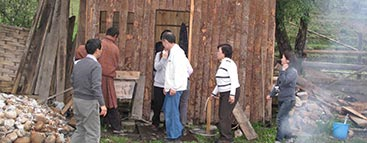
Hot stone bath (Dhotsho) is a traditional bath of Bhutan, where a tradition of heating up stones and then soaking in the water that is in turn heated by the stones. This is also a curative method and is used throughout the country We Bhutanese belief that this bath has so much of medicinal benefits. Some diseases are curable-like joint pains, hypertension, stomach disorder, arthritis and many other minor diseases. Especially for the old age, where we have lots of body pains, joints pains helps a lot by this Hot Stone Bath (Dhotsho).
I think, the minerals in the rocks have certain chemicals, which can cure certain disease of our body. Hot stone bath has no side effects. It is in its pure natural form. We can organize the hot stone bath during your stay in Bhutan.
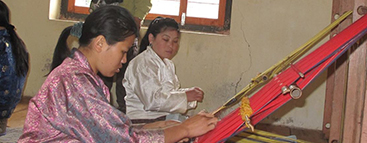
The Bhutanese textiles are rich, vibrant, and colorful and are a complex art form as well as an integral part of the Bhutanese culture. This Bhutan weaving experiences will give you an insight about the rich textiles in Bhutan. You can sit one of the handlooms of Bhutan and weave your self practically. We promise that you will really enjoy this with great satisfaction in your life.
We will also see or learn the natural coloring and dyeing. You can bring your own materials like handkerchief to dye and color. So visit Bhutan and experience it practically by yourself.
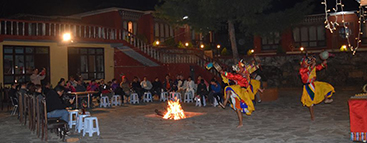
Folk Performing Arts & Music in the Himalayan Kingdom of Bhutan
We have Cultural Program Performing groups, which they will perform like Traditional folk songs, dances and keeps original tunes and dances alive. Moreover, new choreography for some traditional and regional songs is sometimes developed.
The troupe also performs mask dances that have historical and spiritual significance.
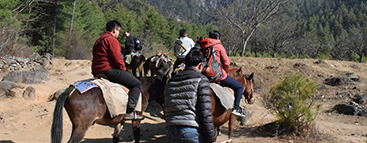
Tiger’s Nest is most visited spot in Bhutan and it is much awaited by every tourist who visits Bhutan to climb to Tiger’s Nest.
It takes about 2 hrs 30mins up steep climb through the forest of pine, oak and Rhododendron. However you can ride the horse and climb till the Taktshang cafeteria.
Our company will provide the Trekking Equipment like Tents (Sleeping, Dinning, Toilet, Shower Tents), Mattress, Hot-Water bag, Cooking Utensils, Sleeping Bags. But we advise our clients to bring their own sleeping bags, if they can. However our guests have to bring some trekking gears by themselves. Therefore, everything mentioned below on the list are useful, and most of the things are important on trek.
Equipment for all the trekkers
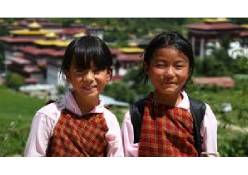
Footwear
camp shoes or thongs
socks – polypropylene
Clothing
jumper or pile jacket
hiking shorts (men) or skirt (opt)
waterproof jacket, poncho or umbrella
hiking pants
T- shirts or blouses
underwear, sun hat
swimwear (opt.)
insulated paints
nylon wind breaker
nylon wind pants
long underwear
woolen hat
gloves
long gaiters
Above 4000 m.
socks, wool, to wear with boots
socks, light cotton, for under wool socks
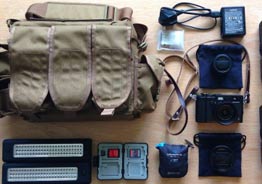
Photography Equipments
( Optional )
lenses cleaning equipments
film
compass
thermometer
binoculars
books for reading while waiting for plane
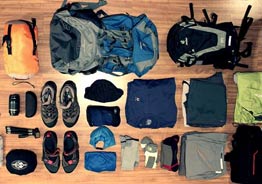
Other Equipments
sleeping bag
water bottle
torch
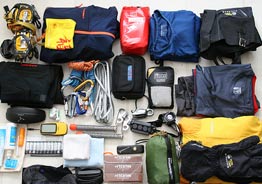
Miscellaneous Items
toilet paper and cigarette lighter
small knife
sun block
towel
laundry soap
medical and frist aid kit
pre-moistened towelettes
sewing kit
sunglasses
sun block for lips


